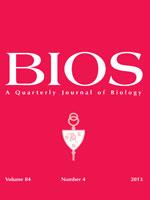Cattle fecal material has been shown to be a major reservoir for the foodborne pathogen Escherichia coli O157. Contaminated fecal material that comes into contact with the hide can lead to contamination of the carcass at slaughter. Thus, it is essential to minimize the prevalence of E. coli O157 in cattle feces in order to minimize the number of contaminated meat products. The Midwestern United States has variable weather patterns and is home to a large percentage of cattle used in the beef industry. The objective of this study was to determine if a prevalence difference of E. coli O157 exists among different Midwestern cattle herds and to assess fecal shedding in the winter and spring. Five Midwestern herds entering a single feedlot in Nebraska were sampled in February and May. Fecal samples (n=50) from each herd were collected and processed by multiple culture-dependent methods. Results of this study indicated that there was no difference in prevalence rates by location but a prevalence rate difference between seasons. The May sampling had an overall feedlot E. coli O157 prevalence rate of 0.32, while the February sampling had a 0.04 prevalence rate. Further studies need to focus on determining differences in prevalence rates by location as well as assess the effect seasonality has on prevalence and risk of infections.
How to translate text using browser tools
1 December 2013
Prevalence of Escherichia coli O157 in Midwestern United States cattle
Mallory J. Suhr,
Amy N. Morris,
John L. Kuehn
ACCESS THE FULL ARTICLE





